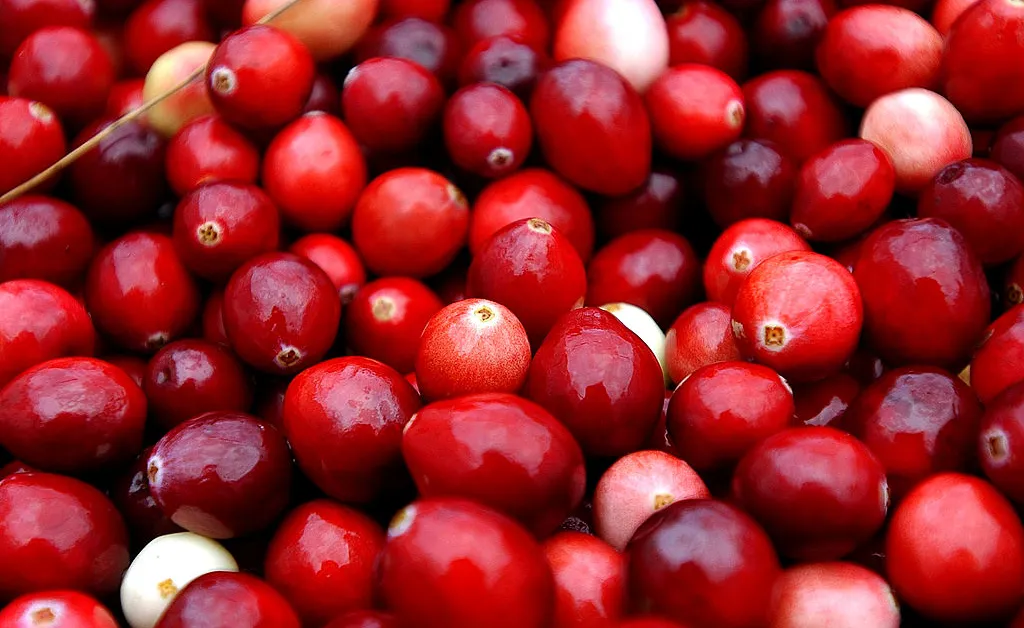For people around the U.S., Thanksgiving is a chance to enjoy the best an autumn harvest has to offer—from sweet potatoes and pumpkin to turkey and green beans.
But as higher temperatures impact growing seasons and extreme weather events wipe out crops, farmers across the country are facing mounting challenges when it comes to growing produce and raising livestock.
[time-brightcove not-tgx=”true”]
“Drought, changing temperature patterns in different parts of the country, natural disasters… all of those things have an impact on the supply of food and agricultural commodities,” says Marcus Coleman, professor of practice at Tulane University whose work focuses on food systems and agriculture.
Climate change is leading to more irregularity when it comes to seasonal weather patterns, which can impact the growing cycle for a number of crops.
Read More: How Climate Change Impacts Winter Weather
Two Thanksgiving staples illustrate these challenges. “Cranberries and apples are both very dependent on specific temperature patterns,” says Coleman. Cranberries, which require cooler temperatures during their growing period to help them ripen before they’re harvested in the fall, can see abnormal blossoming when exposed to inconsistent temperatures. This can lead to lower yields. Meanwhile a late spring frost can kill the blossoms that produce apples.
Turkeys, on the other hand, are particularly sensitive to extreme heat.
“Rising temperature increases heat stress on the poultry,” says Coleman. “From a supply perspective, that could slow down their growth rates or raise the overall [risk for] mortality. It can also drive up the cost of production, because farmers have to put in mechanisms to deal with the heat so as to not impact the output of the birds.”
These changes don’t necessarily mean that you’ll face empty shelves when you’re doing your holiday shopping—but it does mean that you can expect to see higher prices when you’re checking out.
Read more: The Climate Impact of Your Thanksgiving Turkey vs. Holiday Travel
“The impacts of climate change on food production will be increased costs for consumers, without a doubt,” says Mario Herrero, professor of food systems and global change at Cornell University. “The seasonality changes [impact] planting dates. It will make it either more expensive to maintain the yields, or we will need to just accept a lower supply— and lower supply with the increased demand for food that we have leads to higher prices.”
Either way, the cost of our changing climate gets passed on to the consumers, even if they don’t realize it, experts say.
“There’s just less food to eat and that can also then drive up global prices—and that starts to look like inflation,” says Andrew Hultgren, assistant professor of agricultural and consumer economics, at the University of Illinois, Urbana Champagne.
This year, the average price for a 16-pound frozen turkey is down more than 16% from last year, according to data from the American Farm Bureau Federation (AFBF). With Americans eating 3 lbs. less turkey per year than six years ago, retailers are looking for ways to draw back consumer demand—featuring Thanksgiving deals and lower retail prices, the AFBF says.
But a number of sides are seeing prices climb. Sweet potatoes are expected to be 37% more expensive this year as North Carolina, the country’s top sweet potato producer, continues to recover from last year’s Hurricane Helene.
Frozen green peas and a vegetable tray of carrots and celery were among the other items to rise in price, up 17.2% and 61% respectively as farmers across the country faced growing expenses for fertilizer, fuel, machinery, labor and land. The AFBF notes that even modest supply-chain disruptions can have major impacts on fresh produce, and that the continued shortage of farmworkers and rapidly increasing farm wages also play a role in rising produce costs.
Coleman hopes that the shifts might encourage people to shop for food produced locally—which is more sustainable in the long run.
“I think that you could see shifts into more regionalized production— folks enjoying holiday staples that are more local to their region, and an increased demand in local food systems, local farmers markets, and building those relationships with local farmers,” he says.
Knowing where our food is coming from and the challenges farmers are facing can also remind us to be thankful for the food that we have—and to make sure those Thanksgiving leftovers don’t go to waste.
The post What Climate Change Means For Your Thanksgiving Dinner appeared first on TIME.




